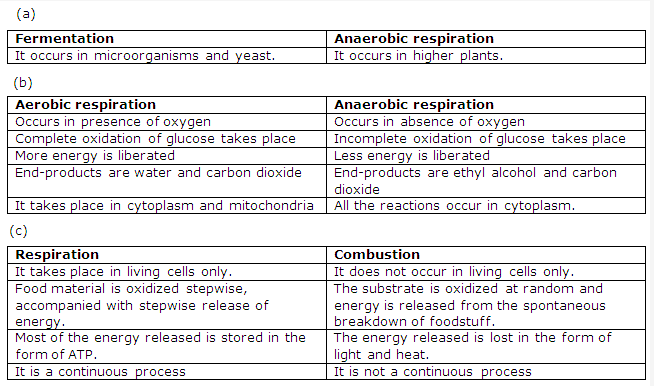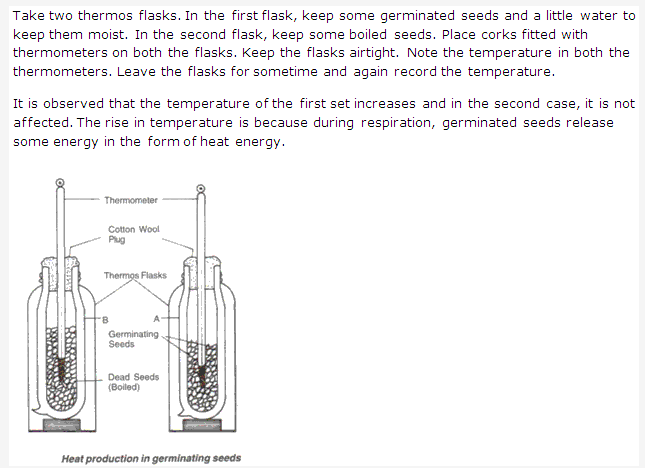Frank ICSE Solutions for Class 9 Biology – Being Alive – The Cell- A unit of Life
PAGE NO : 25
Solution 1:
All living organisms are made up of cells. Cells are the building blocks of all organisms and they give structural and functional stability to the organisms. All the metabolic processes needed to keep an organism alive occur at the cellular level. Hence cell is said to be the basic unit of life.
Solution 2:
In 1839, M.J. Schleiden and T. Schwann proposed the cell theory. This was further expanded by Virchow in 1858. The main features of the cell theory as known at present are:
- All living organisms are composed of cell. Hence cell is the structural unit of living organisms.
- All cells arise from pre-existing cells of the similar kind by cell division.
- The chemical composition and metabolism of all cells is basically alike.
Solution 3:
Cell is the smallest structural and functional unit of all living organisms and is a membrane bound structure enclosing the protoplasm.
The two types of cells are:
- Prokaryotic cells – These cells lack a well-organised nucleus and membrane bound organelles. They are usually found in unicellular organisms, which are referred to as prokaryotes. Example of prokaryotes are bacteria and blue-green algae.
- Eukaryotic cells – These cells possess a well-organised nucleus and membrane bound organelles. Organisms made up of eukaryotic cells are called eukaryotes. Examples of eukaryotes are plants and animals.
Solution 4:
The organelles present in a typical cell are:
- Mitochondria
- Endoplasmic reticulum
- Plastid
- Golgi body
- Vacuoles
- Lysosomes
- Centrosomes
(Write any 5)
Solution 5:
(a) Robert Hooke discovered and named cells.
(b) Virchow stated that new cells originate only from pre-existing cells (omnis cellula e cellula).
(c) Schleiden found that all plant cells have essentially similar structure.
(d) Schwann observed that all animal cells are basically similar and lack cell wall.
Solution 6:

Solution 7:
(a) Mitochondria – It is the powerhouse of the cell and provides energy for carrying out all the vital life activities of the cell.
(b) Ribosomes – It is the site of protein synthesis.
(c) Cell membrane – It gives definite shape to the cell, protects the internal cell contents and allows entry and exit of specific substances into and out of the cell.
PAGE NO : 26
Solution 8:
Plastids are self-replicating organelles present only in plant cells and absent in animal cells. They are of three types:
- Chloroplast – Green coloured plastids (due to presence of chlorophyll)
- Chromoplast– Coloured plastids (except green colour)
- Leucoplast – Colourless plastids
The main functions of plastids are:
- Chloroplasts trap solar energy and use it to synthesize carbohydrates from carbon dioxide and water by the process of photosynthesis.
- Chromoplasts attract insects and other animals to ensure pollination and dispersal of fruits.
- Leucoplasts store starch, proteins or lipids in cell.
(Write any 2 functions)
Solution 9:
During starvation, lysosomes burst and release their powerful enzymes, which act on their own cellular organelles and digest them. This results in cell death. Hence lysosomes are called suicidal bags.
Solution 10:
ER – Endoplasmic Reticulum
SER – Smooth Endoplasmic Reticulum
RER – Rough Endoplasmic Reticulum
Solution 11:
Mitochondria contains enzymes necessary for the oxidation of carbohydrates and release energy needed for all vital life activities in the form of ATP. Hence they are called powerhouses of the cell.
Solution 12:
Nucleus controls all the metabolic activities of the cell. It regulates cell division. Without nucleus, the cell dies and it cannot divide. Hence nucleus is the controller of cell.
Solution 13:

Solution 14:
(a) Chloroplasts are the kitchens of the cell. They trap solar energy and use it to synthesize carbohydrates from carbon dioxide and water by the process of photosynthesis.
(b) Chromosomes are the hereditary material of the nucleus, concerned with the transmission of hereditary traits from parents to offspring.
(c) Endoplasmic Reticulum increases the surface area of the cytoplasm for different metabolic activities of the cell.
Solution 15:
(a) Acetabularia
(b) Deoxyribonucleic acid
(c) Theory
(d) Ostrich
(e) Nucleus
Solution 16:
Platform or work place for synthesis of proteins – Ribosomes
Power house of cells – Mitochondria
Help in formation of cell plate during cell division – Golgi complex
Site for photosynthesis – Chloroplast
Control tower of cell – Nucleus
Structure bearing genes – Chromosomes
Solution 17:
a – Cell membrane
b – Nucleus
c – Chromatin
d – Nuclear membrane
e – SER
f – Mitochondria
g – Golgi vesicles
h – Golgi complex
i – RER
j – Ribosomes
Solution 18:
(a) Robert Hooke
(b) Schleiden and Schwann
(c) Nerve cell
(d) Fibres of ramie
(e) ATP
(f) The cell of Mycoplasma laidlawii
(g) Cell lacking a well-organised nucleus and membrane bound organelles is called prokaryotic cell.
PAGE NO : 27
Solution 19:
a – Plasmodesmata
b – Nucleolus
c – Mitochondria
d – Golgi apparatus
e – Chloroplast
f – cell membrane
g – cell membrane
h – ER
i – Microtubule
Solution 20:
- (d) cells are functional and structural unit of plants and animals
- (a) DNA
- (c) plastid
- (a) nucleus membrane
- (b) Altman
- (b) Robert Hooke
- (a) Robert Hooke
BiologyChemistryPhysicsMaths









